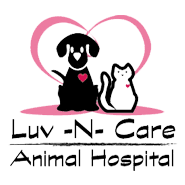Library
-
Ultrasound Examination in Cats
La máquina de ecografías emite y recibe ondas de ultrasonidos de alta frecuencia a través de una sonda o transductor. La sonda se coloca sobre el área que queremos explorar, dirigiendo las ondas a través del cuerpo.
-
Losing weight is difficult. Feeding a veterinary prescription weight-loss food is important, but energy expenditure is also important. Encouraging your cat to exercise can help to increase energy expenditure and can complement a successful weight-loss program.
-
Proprioception is the ability to know where your body is in space. This is what helps reduce falls and injury. Proprioception may be lost suddenly through spinal cord trauma, or it may be reduced with age, joint disease (osteoarthritis), or other orthopedic or neurologic disease. Some specific controlled exercises that can improve proprioception are discussed. Any exercise plan needs to be formulated by a veterinary rehabilitation therapist to avoid injury.
-
Obesity occurs when a cat consumes more calories than they expend. Therefore, managing obesity in cats often requires both dietary changes and increased exercise/activity. There are several methods for increasing activity in cats, including play, using cat trees and climbing structures, outdoor enclosures, and intentional, active feeding practices. Each of these can be beneficial in promoting weight loss.
-
You’ve probably heard lots of funny cat anecdotes; about how you don’t own them…they own YOU; how they feel superior to everyone, especially dogs; that they expect to be treated like royalty. If you are considering a feline acquisition, first consider this: lots of those remarks are true! This handout explains the other factors to consider in selecting the cat most likely to choose your family, too.
-
Acute Kidney Injury in Cats
El fallo renal agudo (FRA) o fallo agudo del riñón se refiere a un fallo repentino de los riñones, los cuales dejarán de realizar sus funciones normales de filtración. El FRA es menos frecuente que el fallo renal crónico (FRC). El FRA desencadena una acumulación de toxinas y otros metabolitos de deshecho en la circulación sanguínea, además de inducir desequilibrios electrolíticos y de base acídica.
-
Chronic Kidney Disease in Cats
Los riñones tienen diferentes funciones. Su principal función es limpiar la sangre de toxinas y sustancias de deshecho, regular el nivel sanguíneo de ciertas sustancias esenciales como el sodio o el potasio, ayudar a conservar el agua del cuerpo y producir la orina.
-
The goal of feeding growing kittens is to lay the foundation for a healthy adulthood. Growing kittens need higher amounts of all nutrients in comparison to adult cats, but excess energy and calcium can create serious problems. Work with your veterinary healthcare team to give your puppy the best chance for success at growing into a healthy adult cat.
-
Orphaned kittens need extra care to compensate for the absence of their mother, and this article outlines the basics, including how and what to feed, how to monitor their weight, how to help them eliminate, and how to keep them safe from infection.
-
Feeding raw food to cats is potentially dangerous - not only to the cat eating the raw food, but also to other pets and humans in the environment, due to the high likelihood of bacterial contamination. Raw food may also not be complete and balanced and could lead to nutrient deficiencies or toxicities. Consuming raw food with bones can lead to life-threatening foreign body obstruction.

